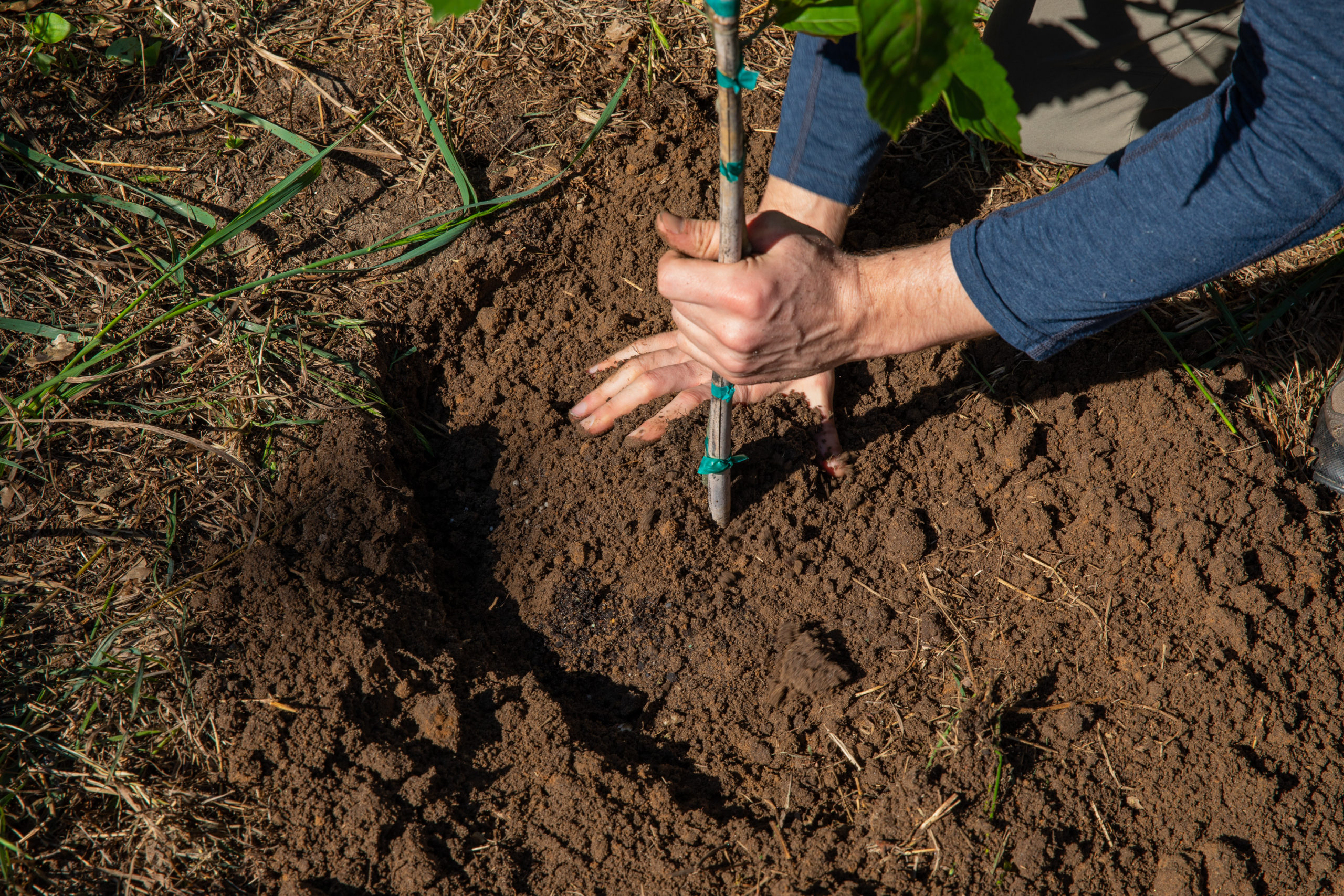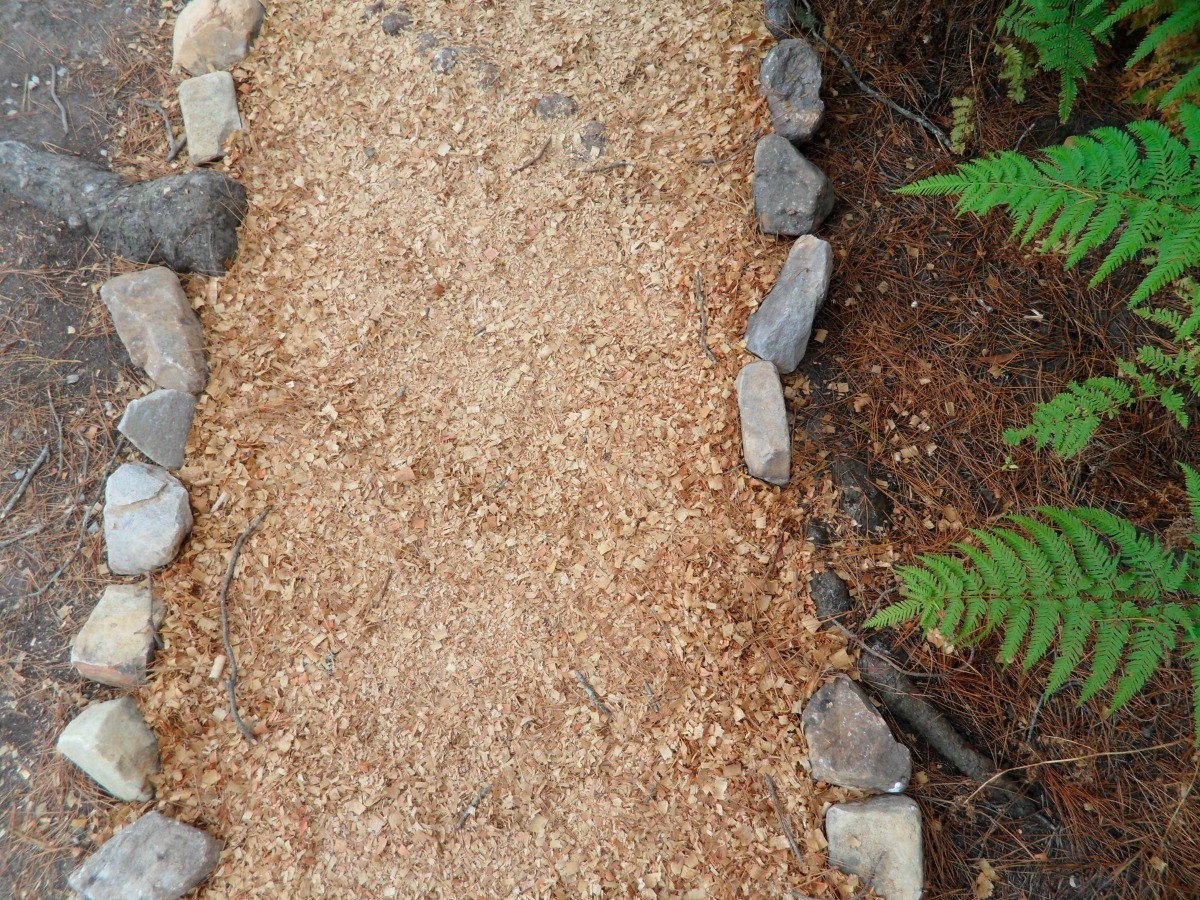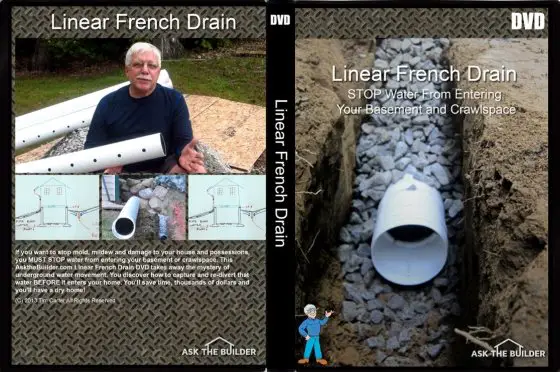Don't be tempted to plant straight into compacted clay, as very few plants are tough enough to handle it. Compacted fine clay particles don't allow water to drain away, so winter rains will cause the roots of plants to rot, and the hot summer sun bakes the clay as hard as concrete! Adding compost and mulching will help improve this soil, allowing water retention and drainage as the organic matter breaks down and mixes with the heavy clay soils. The best way to improve clay soil is to add organic matter that will balance out the heavy clay structure.
This can be in the form of compost, manure, or peat moss. The organic matter will help to break up the clay and improve drainage. In addition, it will provide nutrients for your plants and encourage healthy root growth. This can be done in combination with tilling, especially when creating a new garden.
Amending your soil properly can overcome heavy, compacted clay and get it back on track for healthy lawn and garden growth. Adding materials such as organic compost, pine bark, composted leaves and gypsum to heavy clay can improve its structure and help eliminate drainage and compaction problems. Along with adding compost, a second strategy for adding organic matter to my clay soil is cover cropping. I plant cover crops any time the beds in my garden would otherwise be unplanted or fallow. Fallow periods provide little additional organic biomass while allowing the decomposition of organic matter in the soil to continue. They contribute to the improvements in soil structure that I described earlier.
How Do You Break Up Hard Clay Soil And they can smother weeds and even suppress weed seed germination. Many cover crops will also suppress pathogenic nematodes, for example root knot nematode. These types of soils are high in nutrients, but it can be difficult for some plants to establish a root system if the clay is especially dense and hard. Some plants are better adapted to survive in this type of soil than others. If planting a smaller shrub, you can amend the clay soil with compost to increase the drainage and soften the soil for better root penetration. Digging a hole 2 to 3 times wider than the root ball when planting will help to break up the clay so that young roots can penetrate into the surrounding soil better.
We have developed a list of trees and shrubs that do well in heavy clay soils. For a copy of this guide to download and keep please click here. In addition to a composting and mulching routine, some people opt to import new topsoil into their gardens.
The best type of topsoil is a dark sandy loam, rich in organic matter to hold moisture but with enough coarse particles to allow good drainage. So if you need to buy topsoil, this is a very good investment. An important tip when establishing new garden beds is to avoid compaction of the topsoil before planting, although it is important to rake the soil evenly to ensure removal of air pockets. The soil will settle naturally, especially after watering, so you may even find it necessary to 'top up' the levels with extra soil after a few days.
Adding materials for example organic compost, pine bark, composted leaves and gypsum to heavy clay can improve its structure which help eliminate drainage and compaction problems. Avoid adding sand or peat moss moss to clay they are able to make individuals problems worse. Adding compost, manure or any kind of mulch from bark shreds to coffee grounds adds humus. Clay particles clump round the humus so aeration and drainage improve. Fork gently in to the top layer of soil or allow the worms perform the meet your needs.
Adding compost, manure or any sort of mulch from bark shreds to coffee grounds adds humus. Clay particles clump around the humus so aeration and drainage improve. Keep adding mulch layers as they break down and become incorporated into the soil.
Organic matter in soil serves as food for earthworms, insects, bacteria and fungi-they transform it to soil nutrients and humus. Through this decomposition process, materials are made available as foods to growing plants. In finely textured clay soils, organic material creates aggregates of the soil particles, improving drainage and making it easier to work.
Earthworms are especially helpful in making and keeping soil porous and well draining, said Brewer. For Australian soils adding organic matter is almost always extremely beneficial. Add in both compost and manures, spread out over the top and then dig in to around a spade depth. Do not over work the soil and try to work when soil is damp – not dry and not wet.
Heavy clay soils are the result of too much clay and silt particles and too little humus, organic matter. The clay particles bind together and form heavy clumps which hold the water, are difficult to work and also difficult for plant roots to penetrate. Cover crops, also called green manure crops, help loosen clay or compacted soils with their roots and by adding organic matter. They also prevent nutrient loss and erosion during the non-growing season. Leguminous cover crops, such as winter rye, alfalfa, hairy vetch and clover, which add nitrogen to the soil, are usually planted at the end of summer or early fall. Bark, sawdust, manure, leaf mold, compost and peat moss are among the organic amendments commonly used to improve clay soil.
Two or three inches of organic materials should be spread and rototilled, forked or dug into the top six or seven inches of your garden beds. Gypsum is easily applied to the soil surface with a regular lawn spreader. It's an ideal amendment for improving soil structure and relieving compaction in existing lawns and gardens. By adding organic matter – compost and sheep pellets – and aerating the soil you can open it up and improve the soil structure. Gypsum isn't a quick fix, but in the long term, it can really help improve your soil.
The minuscule clay particles are slightly negatively charged, and the calcium causes the particles to clump together. This effectively increases the particle size of the soil and stops clay sticking together and improves the soil's consistency. Cover crops are plants that are grown for the purpose of improving soil health.
They help to break up clay soils and add organic matter to the soil. Common cover crops include alfalfa, clover, and buckwheat. However, major losses in soil organic matter content can take place when the soil is inverted or mixed annually by tillage. Extensive tillage stimulates microbial activity , and the consumption of mass quantities of organic matter ensues. After your clay soil becomes more friable and you have provided a deep root zone for your garden plants, you should consider reducing tillage. Because the soil remains undisturbed, fertilizers and other soil amendments do not become homogenized in the tillage layer.
Plant feeder roots, therefore, tend to proliferate in the top 2 inches of fertile topsoil. During the initial, pre-garden phase of my soil improvement plan, I managed to break up 10 inches of hard-packed clay with endless swings of my trusty mattock. I spread compost over the surface of the beds an inch at a time and rototilled it in. I was careful not to work the clay when it was too wet, because clay worked wet can result in some tenacious clods, very reluctant in their willingness to ever come apart again. I tried to work the compost deep into the soil, and along with it, I added lime and phosphorus, the clay soil in my garden needing both.
When surface-applied, neither of these materials moves down through the soil, so incorporation to ample depth is very important to permit roots to grow into the subsoil. After 3 to 4 inches of compost, I had the "raised bed" I wanted. Following any of these treatments applying 6X in early spring gets your garden off to the perfect start for the season. 6X is a well-known and well-loved alternative to traditional farmyard manure which takes a lot of the effort out of spreading manure on the garden.
One 15kg sack is equivalent to six or more sacks of traditional bagged farmyard manure and treats up to 184 sq metres . Walking on your lawn or garden when its wet is a common cause. Heavy, beating rains also drive clay particles together. Salts from fertilizers and winter de-icing solutions build up in heavy clay as well. Plants grown in clay soil can often suffer from a number of problems. The dense, compacted nature of the soil means that there is little to no room for air pockets.
This lack of aeration can stunt the root growth of your plants and make it difficult for them to take up nutrients. In addition, clay soils tend to retain water, which can lead to problems with drainage. Excess water in the soil can encourage fungal growth and root rot. Common soil amendments for improving clay soil structure include organic material for example compost, peat moss moss and well-rotted manure. Furthermore, you are able to aerate your soil with the addition of uncomposted kitchen scraps, straw and hay, and cotton husks. Common soil amendments include compost, grass clippings, straw, shredded leaves, rotted manure and dried seaweed.
By aerating your clay soil and adding an amendment, you can break it down fast and encourage new growth. Wait until the ground's completely wet or dry, since it'll be harder to work with soil that's partially damp. Then, turn your soil by digging up small amounts where you want to put plants to aerate it. Once you've turned the soil, mix in an amendment, like compost, biochar, manure, or a commercial soil conditioner, to add some extra nutrients. If your plants still struggle to grow, lay an extra layer of topsoil over the clay.
On heavy clay It's worth extra work spreading a one or two inch layer of grit sand across the clay soil before spreading the organic matter and digging the whole lot in at the same time. You will need to work at it over the years by repeating the process though. Baked clay is almost impossible to break up, rotivate or dig, it's easier to spread the organic matter and grit and wait until the worms have done some of the work for you. If clay soils are left as they are, they can be a problem to grow plants in, but on a good note, clay soils are very rich in nutrients, they just require good preparation before planting.
To successfully grow plants in clay soils it's important to both build up the soil with good organic matter and break up the clay with special additives. Clay soils can be very rewarding and tend to grow excellent crops, given the right treatment. PLANTS FOR CLAY SOILSMany Australian Natives can tolerate clay soils. Clay soil is heavy and dense and can be difficult for vegetable gardening.
A garden area that is primarily clay will have trouble with water drainage and will not have enough air circulation. This can lead to problems with the root systems of your plants, as well as encourage fungal growth. While it is possible to grow vegetables in clay soil, it is important to take some steps to improve the quality of the soil before planting. Improving clay soil will also be good for the long-term health of your vegetable garden. This article will help you to determine if you have clay soil in your garden and, if so, figure out what you can do to help improve it for happier plants.
The water retention in light, sandy soil can be greatly increased with the addition of organic materials and bentonite clay. This in turn creates an ideal environment in which the worms will thrive. As the compost breaks down nutrients are released into the soil, also creating a food source for your plants. So this simple process dramatically improves light soil in two very important ways, providing a long term remedy to these problems. Clay's potential as one of the best soil types for plant growth lies in its unique properties.
Managed well, clay soil typically requires less irrigation and less fertilizer, and leads to healthier plants all around. Mixing in sand may seem like a logical way to tackle heavy clay soil, unfortunately, this is not the case. Without the addition of organic materials, the consistency best resembles concrete and is in fact a poor quality growing environment.
The worst thing you can possibly do with clay soil, or any soil in general, is compact it. As mentioned above clay soil is already lacking in aeration, compaction would further reduce aeration and drainage and create an extremely difficult growing environment. Compaction is caused by a large amount of pressure being placed on land, this could be anything from walking on it to rolling heavy machinery over it. New-built houses often struggle with compaction and waterlogging because large diggers and other machines have compacted the soil. Where possible avoid walking on the soil, especially when the soil is wet. If you are creating vegetable beds, ensure they are narrow so you don't have to stand on them to reach crops.
Clay soils are often full of useful minerals but due to the poor soil structure most of it is inaccessible to the plant. This poor structure is caused by the qualities of the clay particles in the soil. They can be used to improve clay soils too, especially if you choose a cover crop known for its deep root penetration. This is because it can help break down soil compaction in the sub-layers of clay. The best way to loosen and improve clay soil is by adding lots of organic matter.
Organic matter consists of the decaying remains of plants and animals. This results in improved drainage and aeration as well as sofer and lighter soil. All types of soil benefit from the addition of compost, as the presence of organic material in the soil introduces microbes and worms which break down the compost. And as we all know, worms are the gardener's best friend! They are so industrious in decomposing dead and decaying organic material that in a short period of time their activity can greatly improve any soil type.
Commercial products, such as ClayMend, are also available to amend clay soil by introducing beneficial soil microbes and supplying them with nutrients. The company states that a blend of organic acids gathers ultra-fine clay particles and then microbes work to secure them together. The beneficial microbial activity increases and plant roots are able to establish themselves in the restructured soil. Nutrients that have been locked away become free to be attached to the organic material and the clay structures for easy access by the plant roots. Clay consists of minute mineral particles that tend to cling tightly together. Because there are lots of them they have a big surface area which efficiently hangs on to water and nutrients.
Soils with larger particles have more air space and allow the passage of water more freely. So if you can make the soil particles in a clay soil larger you improve drainage and the texture. Employ the power of roots to break up heavy soils and add organic matter. Plant marigolds, zinnias, or other annuals in new gardens, cutting them off at ground level at the end of the season. Any organic material that you throw onto, or dig into, a clay soil is beneficial.
Clay soil is both the best and the worst soil you can have. It is more fertile than sandy soil, but it drains slowly, is difficult to dig into and it does not allow roots to easily grow into it. Physically breaking up clay soil will only work until the first rain, when it compacts down again. You need to both break it up and add organic matter for the soil to maintain its newly lightened texture. For best results, break up and amend the soil at least two weeks before planting.


























